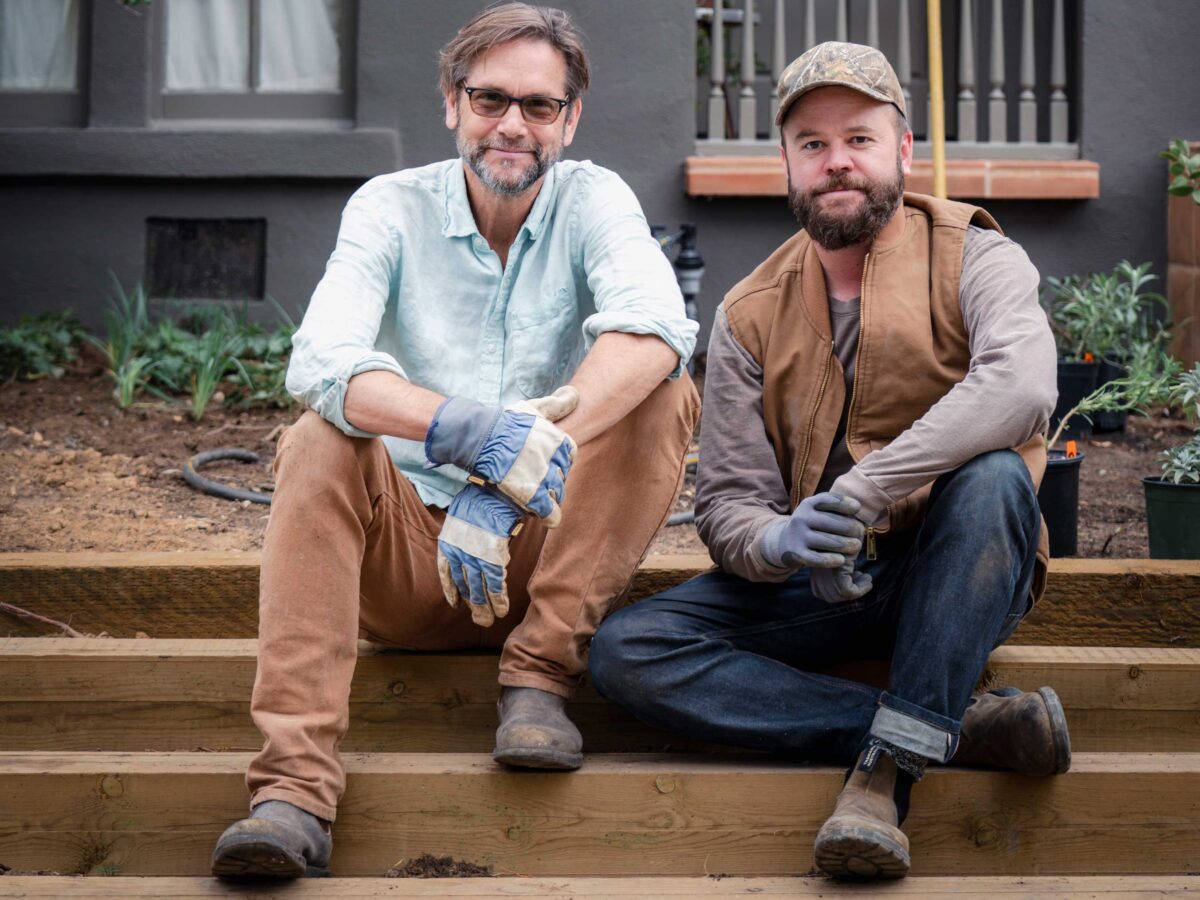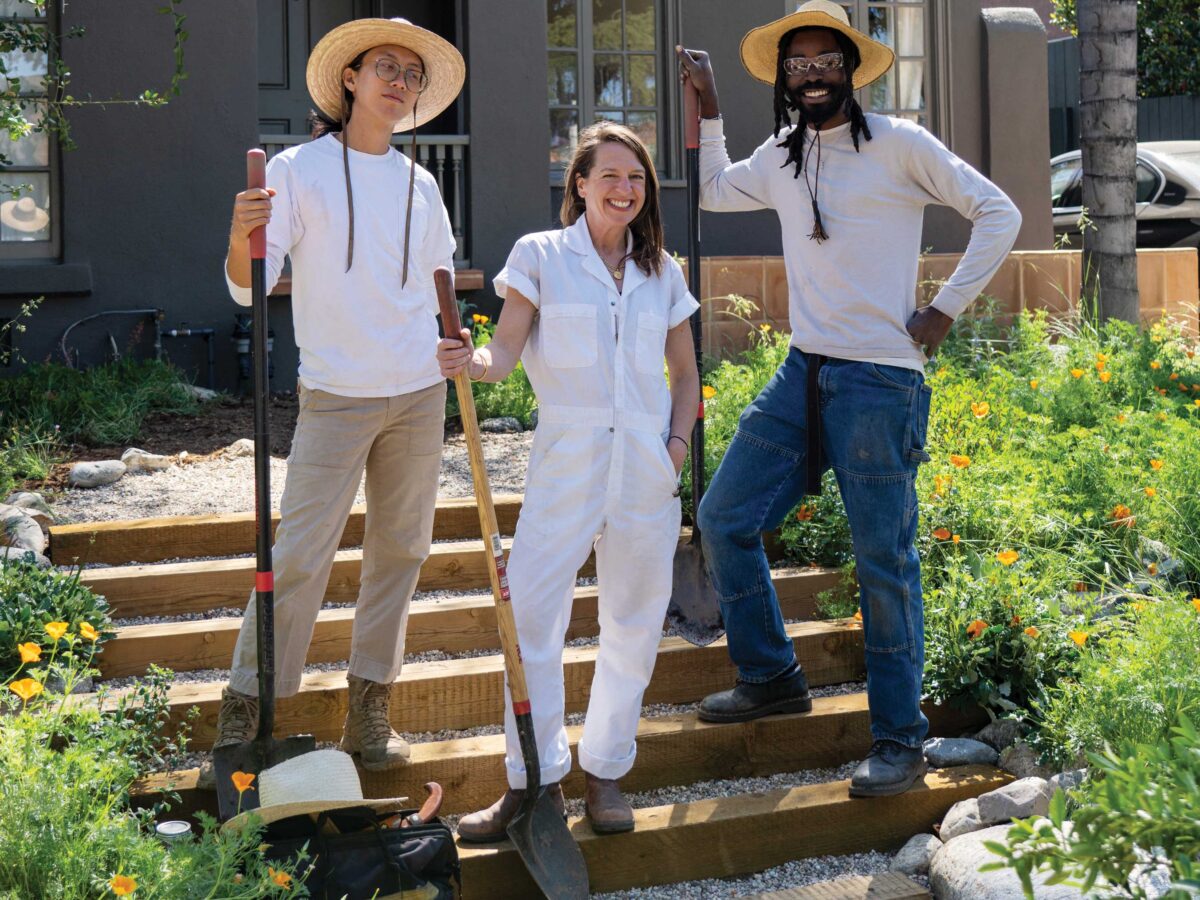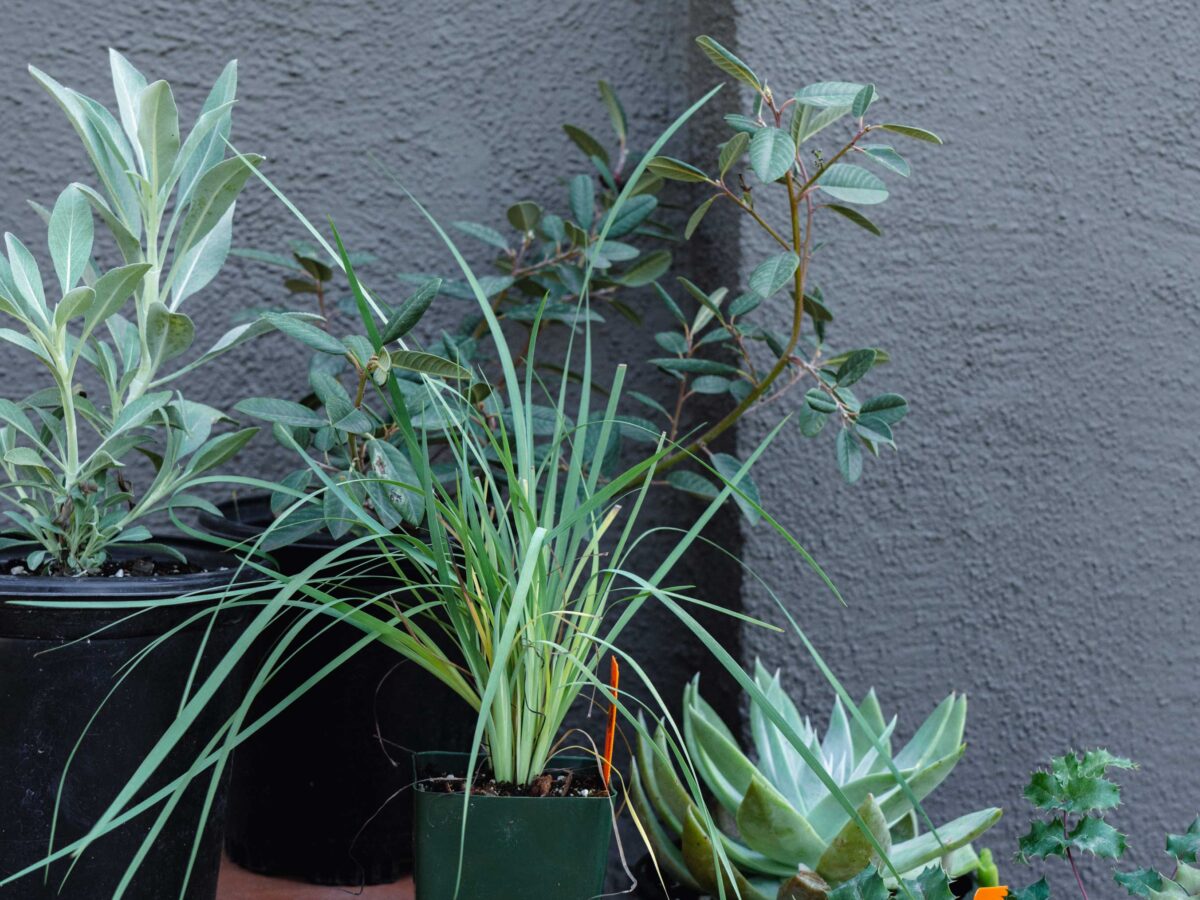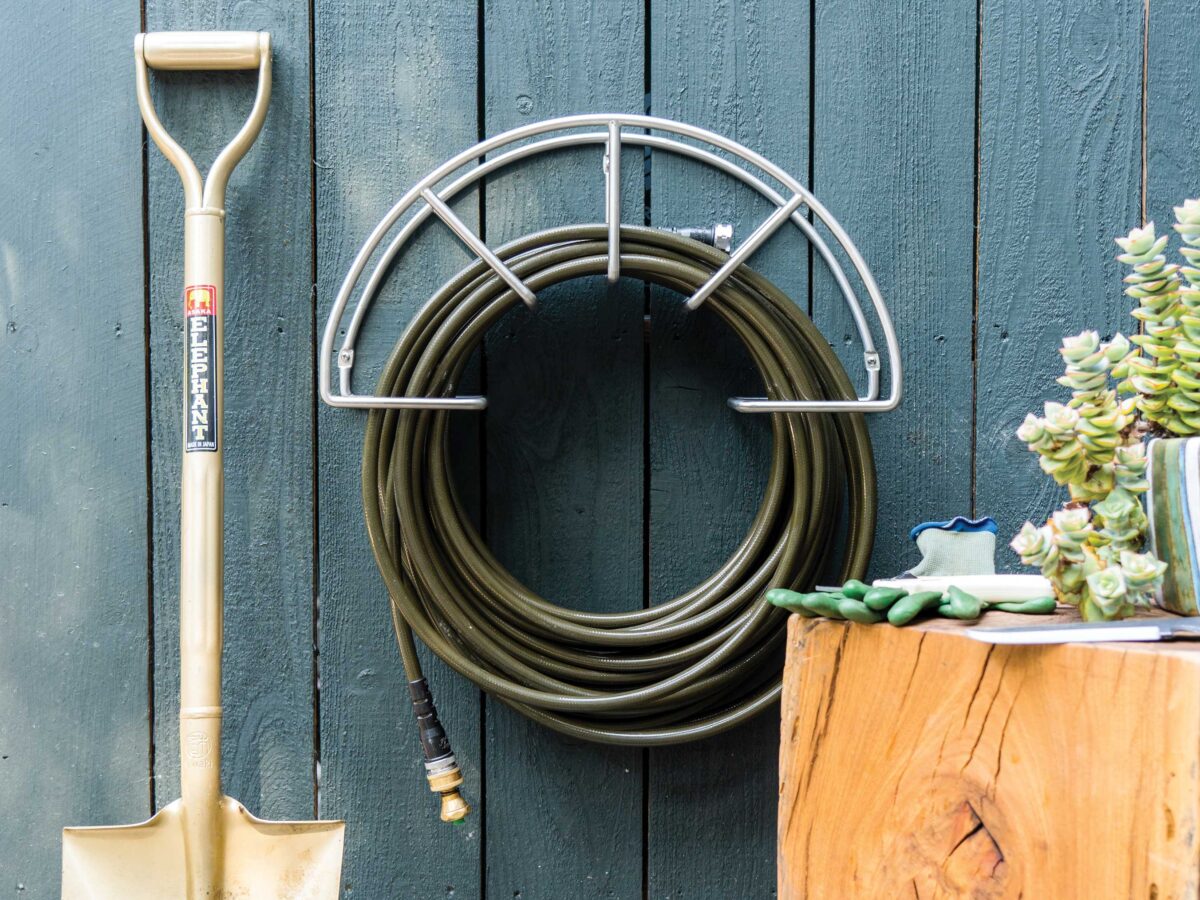
20 Native Plants, 7 Timber Steps, 1 Oak Tree: The Anatomy of a Low-Water Habitat Garden
A lawn gets replaced with something beautiful, sustainable, and beneficial.

After 20 years of having a lawn that took, I wanted a yard that contributed: to the planet, to local animals, to biodiversity, to my neighbors, to my mental health. With the sage (native plant pun intended) design work, counsel, and collaboration of David Godshall of Terremoto and David Newsom of Wild Yards Project—and a plant-friendly paint palette from color consultant Teresa Grow—another little garden that gives was born.

Thomas J. Story
Just one hour per weekend on average is all that this densely planted front yard requires of its human custodians. But what it returns is infinite: the subtle gradations of blue-green going to dusty sage as the sun bakes a maturing canyon prince that rightly gets its name from its original habitat and its coronal structure; the aromatic fronds of Artemisia californica, a.k.a. cowboy cologne, reaching skyward; copper-hued clarkia stalks going dry at the end of summer and the attendant pleasure of snipping them on-site into mulch for the oak tree that will shade them when they return next spring; prolific swaggering poppies asserting their status as the California state flower, stopping kids and neighbors in their tracks with their blaze-orange petals; native bees sweetly napping in the chill of the morning, waiting for the sun to warm them enough to fly; blue-eyed grass and its purple and yellow flower sprays swaying in the shade of the oak. This lovely ex-lawn shelters and feeds hundreds of local insects, birds, and rare bees, requires very little water, and sequesters multiples of carbon over a standard lawn. Here’s how it came together.
5,000 Pounds of Local Boulders and Gravel

Thomas J. Story
Instead of a cinderblock and stucco retaining wall that will inevitably crack, an organic tumble of boulders from a dig 30 miles away provides nooks for wildflowers to grow and shelter for lizards and native bee populations. Permeable gravel allows water to seep through and restore the soil beneath.
20+ Low-Water Native Plants

Thomas J. Story
Native habitat evangelist David Newsom chose sages, buckwheats, a manzanita, cowboy cologne, bunchgrasses, mallows, monkey flower, blue-eyed grass, and wildflowers to provide harbor and food for critters and to bloom successionally season to season, so there are always flowers providing color while other plants go dormant. Godshall advocated for an equally supportive and majestic mature coast live oak.
9 Fruit Trees

Thomas J. Story
Joanna Glovinsky (center) runs Fruitstitute, L.A.’s only fruit-tree service company. She transformed the parkway between the house and street into a mini-orchard of tangerines, lemons, limes, and kumquats that only require once-a-week hand-watering to produce robust crops in the winter.
7 Timber Steps

Hugh Garvey
This ubiquitous landscaping material is used in nearly every project, but in gestural and inventive ways. Here it serves as an L.A.-style version of the New York stoop, offering impromptu seating for bird and bee watching—and an invitation to walk through the garden.
2 Botanically Friendly Paint Colors

Thomas J. Story
Paint specialist and wallpaper designer Teresa Grow of Madison and Grow devised an organic and recessive paint scheme of Benjamin Moore Deep Creek and Cromwell Gray that allows the muted hues of the native plants to pop and the successional blossoms to shine as they shift from violet to sherbet and blaze orange.
2 Movable Lounge Chairs

Hugh Garvey
Lightweight but sturdy Fermob Luxembourg garden chairs (the same model used in the Tuileries in Paris) match the native succulents and can be placed in the shade or sun as desired.
1 Garden Hose

Thomas J. Story
That’s right, no sprinklers, no drip lines, no mechanical irrigation whatsoever. After a year or so of weekly hand watering, with additional soaking during super-dry periods, the plants will be established and need very little extra water for much of the year.
We only recommend things we love. If you buy something through our site, we might earn a commission.
